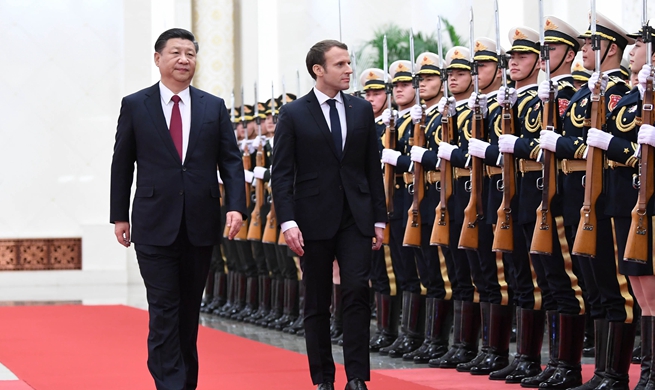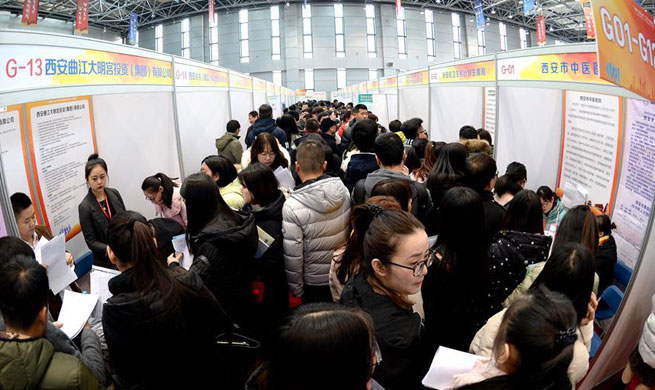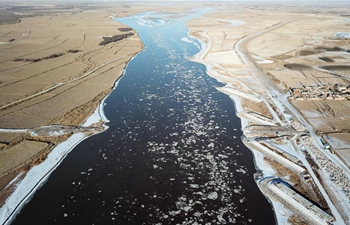ADDIS ABABA, Jan. 10 (Xinhua) -- Economic growth in sub-Saharan Africa is projected to rise to 3.2 percent in 2018 and to 3.5 percent in 2019, on the back of firming commodity prices and gradually strengthening domestic demand, according to the World Bank.
According to the latest Global Economic Prospects (GEP) report released by the bank, growth in the region is estimated to have rebounded to 2.4 percent in 2017, after slowing sharply to 1.3 percent in 2016.
The rise reflects a modest recovery in Angola, Nigeria, and South Africa, the region's largest economies, supported by an improvement in commodity prices, favorable global financing conditions, and slowing inflation that helped to lift household demand, the report said.
However, growth was slightly weaker than expected, as the region is still experiencing negative per capita income growth, weak investment, and a decline in productivity growth, said the report.
Although oil producers in the region continue to deal with the effects of the earlier oil price collapse, growth rebounded moderately in metals-exporting countries, reflecting an uptick in mining output amid rising metals prices, while growth in non-resource-intensive countries, largely agricultural exporters, was broadly stable, supported by infrastructure investment and crop production, according to the report.
Although the growth is forecast to rise in the years 2018 and 2019, it will remain below pre-crisis averages, partly reflecting a struggle in larger economies to boost private investment.
South Africa is forecast to tick up to 1.1 percent growth in 2018 from 0.8 percent in 2017, and the recovery is expected to solidify, as improving business sentiment supports a modest rise in investment.
However, policy uncertainty is likely to remain and could slow needed structural reforms, warns the GEP.
Nigeria is anticipated to accelerate to a 2.5 percent rate this year from 1 percent growth in the year just ended. An upward revision to Nigeria's forecast is based on expectation that oil production will continue to recover and that reforms will lift non-oil sector growth.
And growth in Angola is expected to increase to 1.6 percent in 2018, as a successful political transition improves the possibility of reforms that ameliorate the business environment.
Non-resource intensive countries are expected to expand at a solid pace, helped by robust investment growth. Cote d'Ivoire is forecast to expand by 7.2 percent in 2018; Senegal by 6.9 percent; Ethiopia by 8.2 percent; Tanzania by 6.8 percent; and Kenya by 5.5 percent as inflation eases, according to the report forecast.
However, given demographic and investment trends across the region over the longer term, structural reforms would be needed to boost potential growth over the next decade, according to the report.
It further warned that excessive external borrowing without forward-looking budget management could worsen debt dynamics and hurt growth in many countries. Protracted political and policy uncertainty could further hurt confidence and deter investment in some countries.
It said that rising government debt levels highlight the importance of fiscal adjustment to contain fiscal deficits and maintain financial stability. Structural policies, including education, health, labor market, governance, and business climate reforms, could help bolster potential growth.















